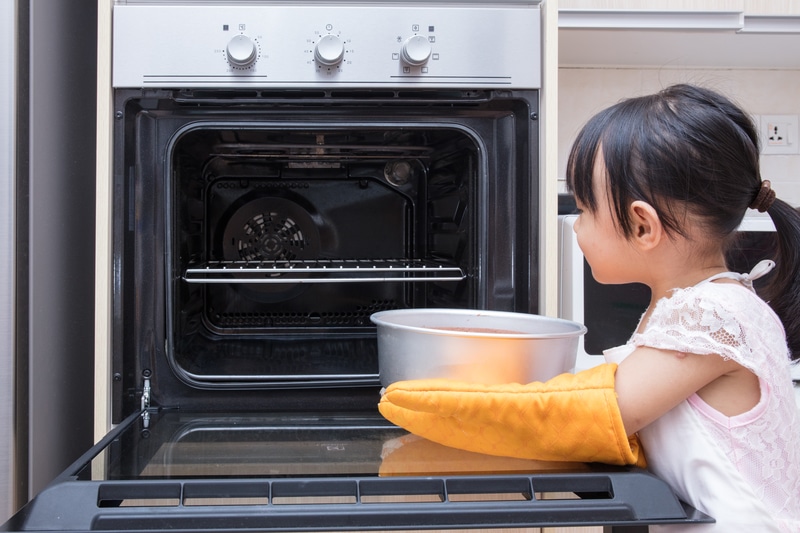 The kitchen is often the heart of the home, a place filled with happy memories, delicious smells and recipes passed down for generations. It’s also one of the most important – and most challenging – places to successfully switch to less toxic options. Because the kitchen can be so overwhelming, we’ve created a series of 3 blog posts with all the information you need to make the swap to a non-toxic kitchen in bite-sized portions. We’ll start with the big one: shifting to toxic chemical free cookware.
The kitchen is often the heart of the home, a place filled with happy memories, delicious smells and recipes passed down for generations. It’s also one of the most important – and most challenging – places to successfully switch to less toxic options. Because the kitchen can be so overwhelming, we’ve created a series of 3 blog posts with all the information you need to make the swap to a non-toxic kitchen in bite-sized portions. We’ll start with the big one: shifting to toxic chemical free cookware.
How to shift to toxic chemical free cookware
1. Know why nonstick is a no-go
We know exactly what you’re thinking right now: nonstick is magic, you can’t cook eggs without it, you’d rather get rid of your couch than your nonstick skillet. We get it, and we’re sorry, but it’s probably got to go. Here’s why.
Many nonstick surfaces, like Teflon, are treated with perfluorooctanic acid (PFOA) which is a Perfluorinated Chemical, or PFC. PFCs are a lipophobic byproduct, which means they repel and resist the absorption of oil, like in a candy bar wrapper or the inside of a microwave popcorn bag (a common source of PFOA in our bodies). These compounds never break down, so when we absorb them, we’re stuck with them. They’re linked to serious health risks, and they’ve even been found in 99% of 300 babies born at Johns Hopkins Hospital in 2004, altering the infants’ hormone levels.
Unfortunately, as miraculous as nonstick cookware may seem, there is a considerable downside, and we promise, you can still make eggs that won’t stick! There are some truly ingenious companies out there making nonstick chemical free cookware options that are free of PFOA and PFCs. Check out this great roundup from organic authority.
And utilize some the cast iron skillets or stainless steel plans you already have on hand. The key to avoiding sticking is to heat the pan over low to medium heat (not high heat!) until fully heated, then add fat, then your food. Don’t move your food too much. Check out these sources to learn more about the optimal techniques for cooking eggs in stainless steel or cast iron.
2. Avoid aluminum
Aluminum is a soft, thin metal and, when heated, leaches into our food. It’s been connected with brain disorders and behavior abnormalities and is considered toxic, so it’s best to use aluminum with caution. Some experts say that using anodized aluminum solves this problem, but we think if you have the choice, it’s best to err on the side of avoiding aluminum altogether.
3. Don’t forget utensils
Luckily, this is an easy one! Choose chemical free cookware materials like wood, bamboo, silicone or stainless steel. As always, we recommend avoiding plastic as heat can cause the plastic to melt, flake and break down over time, and leach chemicals into our food.
Some chemical free cookware swaps to check out
Okay, so now that we’ve told you to toss half your cooking equipment, what should you buy? Some excellent substitutes for nonstick and aluminum pans are:
- Ceramic and Enamel (Just make sure you do your research here, as some ceramic cookware contains lead, which is used for color uniformity. Lots of great brands are lead-free and you can check out some suggested ones here and here).
- Cast iron
- Stainless steel
- Glass and Corningware
And here is a great roundup from Wellness Mama on safer swaps for your chemical free kitchen. With these simple swaps you’re already well on your way to a toxic chemical free kitchen. And don’t forget to clean up after those wonderful meals with a toxic-free cleaner and EPA registered sanitizer and disinfectant like Force of Nature. It’s a little appliance that uses electricity to convert just salt, water & vinegar into a multipurpose cleaner that kills 99.9% of germs without toxic chemicals. It’s safe on just about any surface and replaces all your cleaners, deodorizers, and sanitizers with just 1 simple solution. Happy cooking!



